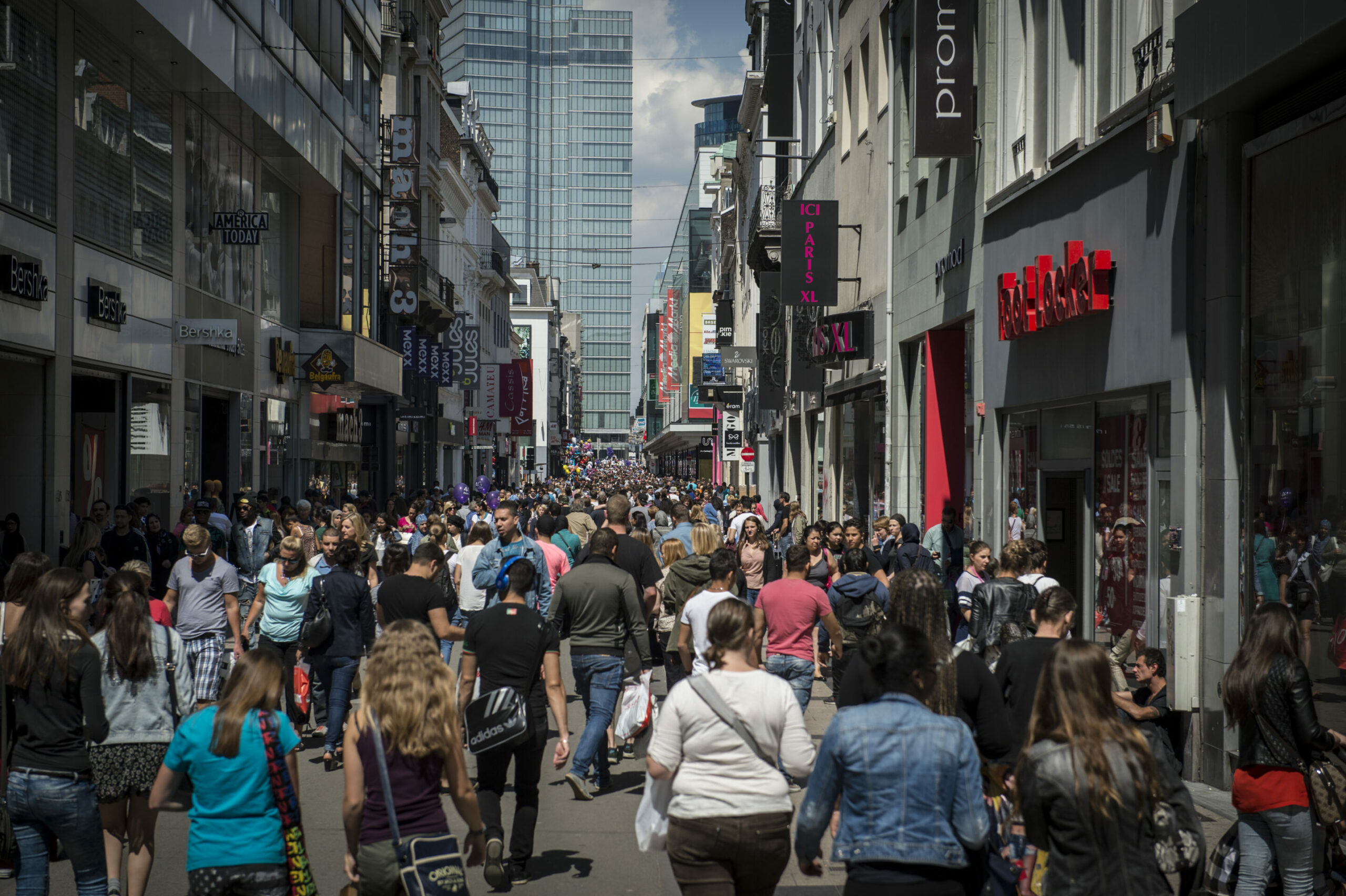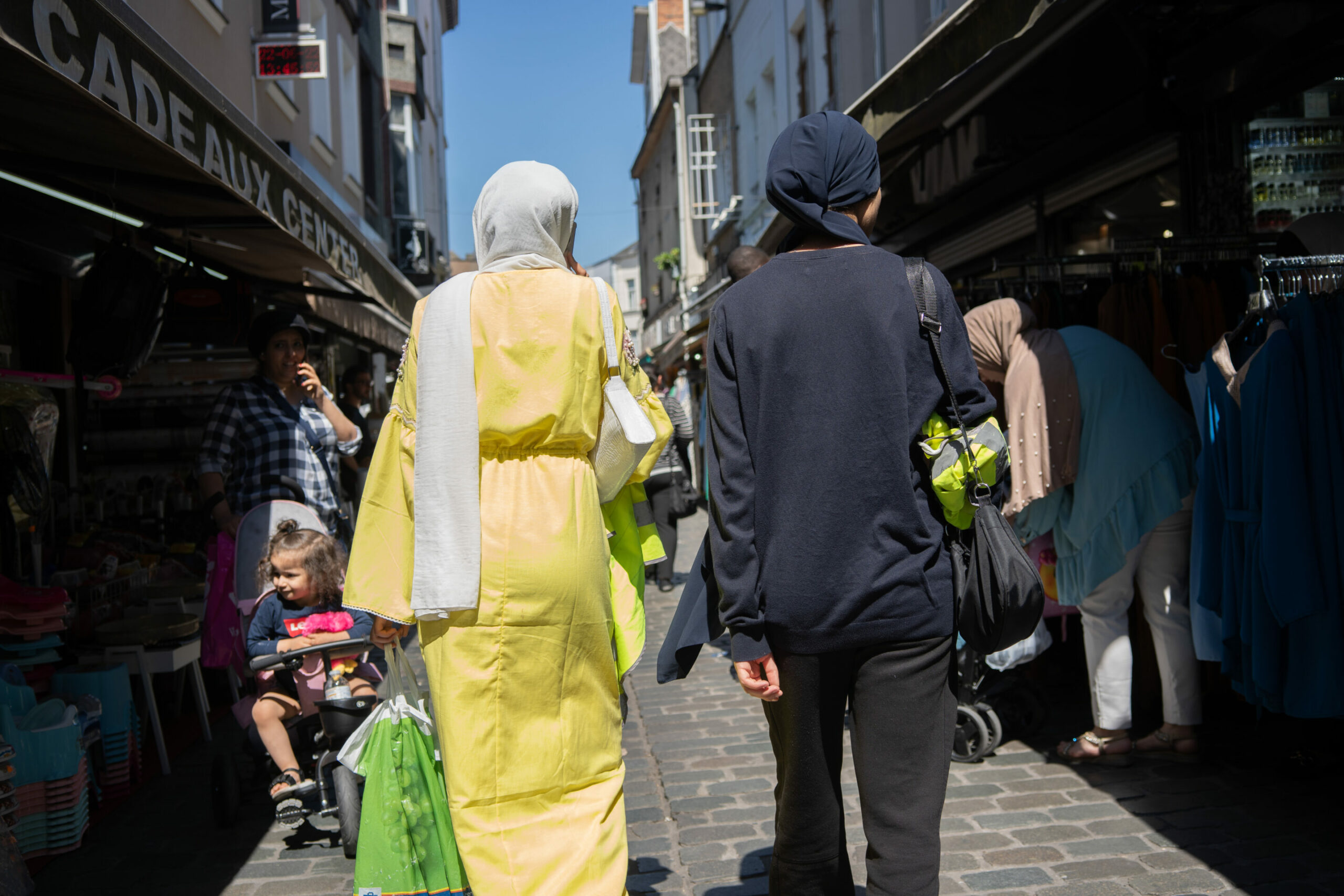Despite the criticisms against the controversial Brussels mobility policy Good Move, walking and cycling account for 48% transport used by shop customers in the Belgian capital's commercial centres, new research shows. Individuals using their cars account for only 17%.
Diving into the question of "The Challenges Mobility and Commerce in Brussels," a new study by Hub Brussels and the French-speaking University of Brussels (ULB) has analysed the key shopping districts in the city to see which mode of transport was predominantly used.
Mobility issues are regularly in the news in Brussels, with the Good Move as the key example.
Since its implementation, a number of business owners, particularly in the Marolles and Sablon districts, have claimed that their shops have lost clientele or even gone out of business as a direct result of the Good Move policy restricting traffic to the city centre.
"When it takes two hours to get out of the city centre, when one-way streets appear overnight, and when you promote cycling, you can't transport suits," lamented Xavier Dujardin, the former manager of costume designer Maghet, a shop in the Marolles which closed its doors at the beginning of the month after 60 years of operations.

A demonstration organised by the committee 'Non au plan Good Move' to request a review of the current mobility policies, in Brussels, Sunday 11 June 2023. Credit: Belga / Hatim Kaghat
This discourse, aided by the bad election results for most political parties which have pushed for Good Move, has threatened the execution of the ambitious policy to dethrone the car’s dominance in the city, aiming to make the city better connected through public transport, improved urban infrastructure and a reduction in air pollution.
Brussels’ new biggest party, MR, campaigned on ending the policy, saying it makes Brussels "chaotic" and "unliveable" but that most of all, it is hurting business activity.
Yet, the findings in the study paint a different picture of how mobility affects commercial operations in the 123 analysed shopping hubs of Brussels. These include Rue Neuve, Porte de Namur and Rue de Brabant, but also high streets and other commercial areas, representing 65% of all points of sale in the region.
48% foot or bike
After commuting to and from work, shopping-related journeys are the second most common reason for customers to travel within Brussels or between the capital and the rest of the country. At weekends, it is by far the main reason for travel.
The study notes that in Brussels, the mode of transport is often on foot or by bicycle. "In Brussels, however, it must be emphasised that the car is not the main means of transport used for shopping," the study read.

A crowded Rue Neuve in 2014. Credit: Belga
In the polling of shopping districts within the 60 areas monitored by Hub Brussels, the median proportion of shoppers coming by car or motorbike is 17%, compared with 48% for shoppers coming on foot or by bike and 43% for public transport users.
However, when Brussels households are questioned at home, the proportion of cars as the main means of transport used for shopping rises to an average of 57%.
Despite the difference in survey methodology, this can also be explained by the lack of differentiation between types of purchase. The figures include, in particular, journeys made for major shopping (frequently made outside shopping areas, in areas that are less accessible without the use of a car) and purchases of heavy capital goods (for which the proportion of purchases made outside the Region is high, and the use of the car is also significant).
Moreover, this average share of 57% conceals a considerable variability within the population. Depending on age, car use for shopping rises from 50% for 18-29-year-olds to over 60% for 45-64-year-olds.

Two women walking down a pedestrian shopping street in Molenbeek-Saint-Jean, Wednesday 22 June 2022. Credit: Belga / Noe Zimmer
On the other hand, depending on socio-economic level, the figure rises from less than 50% in working-class neighbourhoods to more than 70% in the most affluent neighbourhoods. These are also more peripheral, less dense and less well-served by shops and public transport, the study noted.
This change can be further observed according to destination. The commercial centres where shoppers come mainly by car are, on the one hand, diversified working-class neighbourhoods (such as around the Northern Quarter or Molenbeek), and shopping centres or commercial estates on the outskirts of the city, such as the Basilix Shopping Centre or Stalle.
'No parking, no business'
The authors carried out the research to move beyond the overly simplistic "no parking, no business" vision and appreciate the diversity of the commercial environment.
The study did note the main challenge for mobility policy is to balance the "current social and environmental challenges," in particular by reducing car journeys and encouraging the use of public transport, cycling and walking, while also providing an "attractive and economically healthy" urban commercial environment.
"What's more, these issues are managed in an urban context where space is densely occupied and multifunctional, and where mobility policies have an immediate effect on other aspects of urban management," the researchers noted.

Demolition of Parking 58 in 2017, a car-park built for Expo 58, where now Brucity (City of Brussels administration) is located. Credit: Belga
Good accessibility is seen as being key to a thriving business. Shopkeepers often associate increasing the number of parking spaces and reducing the cost of parking as key to improving the attractiveness of shops in Brussels.
"This fear is partly well-founded, although empirical evidence also frequently shows that retailers often overestimate the proportion of 'regular' motorists in their customer base," the study said.
In the Pentagon and Louise areas, public car parks are only saturated in exceptional circumstances. As they are often handed to private operators, they are too often seen primarily as a source of income, including for public players.
The study also noted a problem with logistics. While the majority of retail deliveries involve small commercial vehicles (under 3.5 tonnes), there is no systematic record of their number, activity, origin or destination.
"With the proliferation of home deliveries and parcel deliveries accompanying the rise of e-commerce, this limited view of logistics is problematic, as it does not allow us to quantify, anticipate and respond precisely to these trends."

